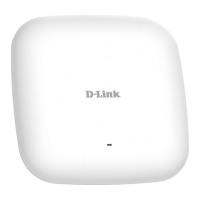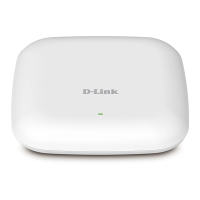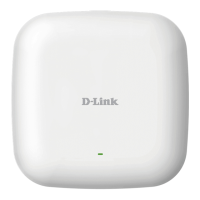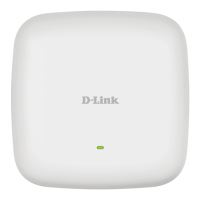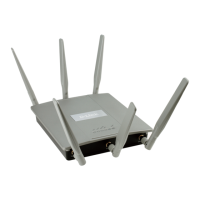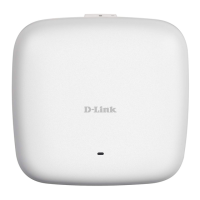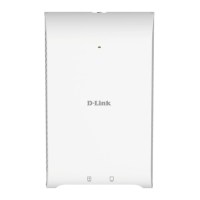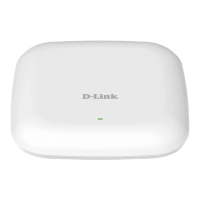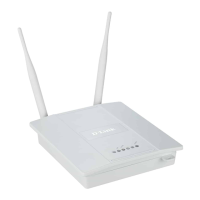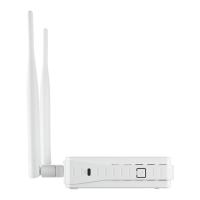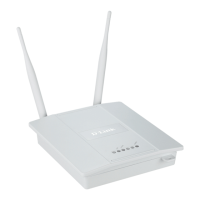D-Link DAP-2660 User Manual
40
Performance (5GHz)
On the Performance Settings page the users can congure more advanced settings concerning the wireless signal and hosting.
Wireless Band:
Wireless:
Wireless Mode:
Data Rate*:
Beacon Interval (40-
500):
DTM Interval (1-15):
Transmit Power:
Select the wireless band used here. Options
to choose from are 2.4 GHz and 5 GHz. In this
section we’ll explain the 5GHz wireless band.
Use the drop-down menu to turn the wireless
function On or O.
Select the wireless mode here. Options to choose
from are Mixed 802.11n, 802.11a, 802.11a Only,
802.11n Only and Mixed 802.11ac.
Only after selecting the 802.11a Only option as
the wireless mode, can the data rate be selected.
Select the data rate here. Options to choose from
are 54, 48, 36, 24, 18, 12, 9, and 6 Mbps.
Beacons are packets sent by an access point to
synchronize a wireless network. Specify a value in
milliseconds. The default (100) is recommended.
Setting a higher beacon interval can help to save
the power of wireless clients, while setting a lower
one can help a wireless client connect to an access
point faster.
*Maximum wireless signal rate derived from IEEE Standard 802.11 specications. Actual data throughput may vary. Network conditions and environmental factors, including volume of network trac, building materials
and construction, and network overhead can lower actual data throughout rate.
Select a Delivery Trac Indication Message (DTM) setting between 1 and 15. 1 is the default setting. DTIM is a countdown
informing clients of the next window for listening to broadcast and multicast messages.
This setting determines the power level of the wireless transmission. Transmitting power can be adjusted to eliminate overlapping
of wireless area coverage between two access points where interference is a major concern. For example, if wireless coverage
is intended for half of the area, then select 50% as the option. Use the drop-down menu to select 100%, 50%, 25%, or 12.5%.
